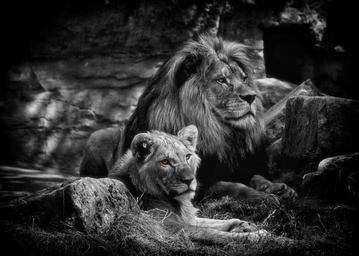Introduction
In the world of photography, self-portraits have taken on a new life, especially within the realm of aesthetic and fine art photography. Exploring Aesthetic Self-Portrait Photography: Tips for Stunning Prints will guide you through the intricate layers of this captivating art form. From faceless self-portraits that evoke mystery to contemplative photography that fosters introspection, there’s an entire universe waiting to be explored behind the lens of your camera. This article serves as not only a comprehensive guide but also as a source of inspiration for those looking to delve into the expressive world of aesthetic self-portrait photography.
What is Aesthetic Self-Portrait Photography?
Aesthetic self-portrait photography encapsulates a creative expression that combines artistry with personal narrative. By utilizing various techniques and approaches, photographers craft images that reflect their inner worlds while maintaining a visually appealing aesthetic. Whether it’s through vintage filters or modern digital manipulation, these portraits go beyond mere representation.
The Rise of Self-Portrait Photography in Contemporary Art
The evolution of self-portrait photography has mirrored societal changes and technological advancements. As cameras became more accessible and social media platforms flourished, individuals began using self-portraiture as a means to express identity, emotions, and experiences. Today, it stands at the intersection of art and personal storytelling.
Understanding Fine Art Photography
Fine art photography is defined by its ability to convey a message or evoke emotions rather than simply document reality. It marries technical skill with artistic vision to create stunning prints that can be appreciated in galleries or homes alike. This genre provides fertile ground for aesthetic self-portraits that resonate with viewers on multiple levels.
The Essence of Contemplative Photography
What is Contemplative Photography?
Contemplative photography emphasizes mindfulness and being present in the moment while capturing images. It's about seeing beyond the surface, cultivating awareness about your surroundings, and allowing inspiration to flow naturally. This approach can yield profound results when applied to self-portraits.
How Can You Incorporate Contemplative Elements?
Incorporating contemplative elements into your self-portrait work involves slowing down and tuning into your environment. Take time to observe light patterns, textures, and emotional undertones in your chosen setting before snapping any shots.
The Magic Behind Faceless Self-Portraits
Faceless self-portraits evoke anonymity while allowing viewers to project their interpretations onto the image. These portraits often highlight body language, clothing choices, or environmental context without showing facial features.
Why Choose Faceless Self-Portraits?
The beauty of faceless self-portraits lies in their ability to tell stories without revealing too much information. They invite audiences into a space where they can contemplate the narrative behind the image without preconceived notions based on appearance.
Techniques for Stunning Aesthetic Photos
Creating stunning aesthetic photos requires both technical skills and an artistic vision. Here are some effective techniques:
Lighting: Experiment with natural light during golden hour for soft shadows. Composition: Use framing techniques—such as leading lines—to draw attention. Post-processing: Editing applications can enhance colors or add filters for stylistic effects. Props: Incorporate meaningful objects that resonate with your narrative. Color Schemes: Choose color palettes that evoke specific moods or themes.Equipment Essentials for Self-Portrait Photography
While you don’t need top-of-the-line equipment to capture stunning aesthetic photos, certain tools can enhance your ability:
| Equipment | Purpose | |--------------------|-------------------------------------------| | DSLR/Mirrorless | High-quality images | | Tripod | Stability for long exposures | | Remote Shutter | Allows hands-free shooting | | Reflectors | Manipulate natural light | | Editing Software | Post-production enhancements |
Crafting Your Unique Style
Your photographic style defines how you communicate through images. It’s essential to explore various aesthetics—whether it’s moody vintage tones or bright contemporary vibes—to find what resonates with you personally.
Exploring Vintage Aesthetic Photography
Vintage aesthetic photography evokes nostalgia through its use of muted colors, film grain textures, and retro props. To achieve this style:
Choose Vintage Props: Incorporate antiques or old-fashioned garments. Use Film Cameras: If available, consider shooting with film cameras for authentic results. Editing Techniques: Apply sepia tones or grain effects during post-processing.Creating Aesthetic Pictures To Put On Your Wall
An aesthetic picture should not only captivate but also create an atmosphere in a space when printed and displayed on walls:

- Consider size and scale when printing; larger prints make bold statements. Select frames that complement both your image style and interior decor.
Tips for Choosing Prints
Material Matters: Choose between canvas prints or high-quality photo paper based on desired texture. Location: Think about where you'll hang the print—light exposure affects color longevity. Theme Consistency: Maintain thematic coherence among multiple prints displayed together.Empowering Photography Through Self-Portraiture
Self-portrait photography empowers individuals by enabling them to reclaim their narratives and express emotions visually:
Boosting Confidence: Capturing oneself authentically fosters positive body image. Artistic Exploration: Experimenting with styles encourages creativity beyond comfort zones.Quiet Pictures Aesthetic – The Power of Simplicity
Embracing simplicity in composition often leads to striking results known as quiet pictures aesthetics which focus on minimalism:

Key Elements of Quiet Pictures Aesthetic
Negative Space: Utilize empty areas around subjects to foster contemplation. Subtle Colors: Soft pastels create calming atmospheres conducive to introspection.Navigating Themes in Aesthetic Self-Portrait Photography
Themes https://writeablog.net/berhanczwu/what-makes-a-fantastic-self-portrait-insights-from-fine-art-photography play pivotal roles in guiding narrative directions within photographs:
Identity Exploration - Delve into personal history through wardrobe choices reflecting cultural backgrounds. Emotional States - Portray feelings such as joy or melancholy using color theory effectively.Developing Your Concept Before Shooting
Preparation is key! Before heading out with your camera:
1 .Define Your Concept:
- What do you want to express? Which emotions should resonate?
2 .Scout Locations:
- Find spots that align with your envisioned atmosphere—urban settings versus nature backdrops offer different vibes!
3 .Storyboard Ideas:
- Sketch rough outlines detailing poses/props used during shoots helps visualize final outcomes!
Editing Techniques for Stunning Final Prints
Editing transforms raw captures into polished artwork ready for display:
1 .Basic Adjustments:

- Tweak exposure/contrast/saturation levels enhancing overall quality!
2 .Creative Effects:
- Play around filters/styles available across various editing software options (ex.: Lightroom/Photoshop).
3 .Export Formats:
- Save images appropriately based upon intended use; higher resolutions needed if preparing large prints!
FAQs About Aesthetic Self-Portrait Photography
1 .What are some popular themes in aesthetic self-portrait photography?
Some popular themes include identity exploration, emotional states (joy/melancholy), nature connection & urban life contrasts!
2 .How do I get started with self-portrait photography?
Start by defining concepts/themes you wish explore then scout locations/props accordingly!
3 .What equipment do I need?
Basic gear includes DSLR/mirrorless camera & tripod; additional tools like reflectors may enhance lighting effects further!
4 .How can I develop my unique photographic style?
Experimentation is key! Try varying compositions/colors & observe which resonates most deeply within yourself!
5 .What editing software should I use?
Popular editing software includes Adobe Lightroom & Photoshop; both offer comprehensive tools suited beginner/expert alike!
6 .How important is lighting in portraiture?
Lighting plays crucial role affecting mood/composition; experimenting natural/artificial sources yields diverse outcomes!
Conclusion
As we conclude our journey through Exploring Aesthetic Self-Portrait Photography: Tips for Stunning Prints, remember that this art form is not just about taking photos but rather exploring one's soul through visual storytelling! By embracing techniques discussed herein—from understanding fine art principles down crafting unique aesthetics—you’ll be well-equipped embark upon creating stunning prints worthy display walls alongside sharing intimate reflections upon social platforms! So grab your camera today start documenting beautiful narratives unfold before lens!